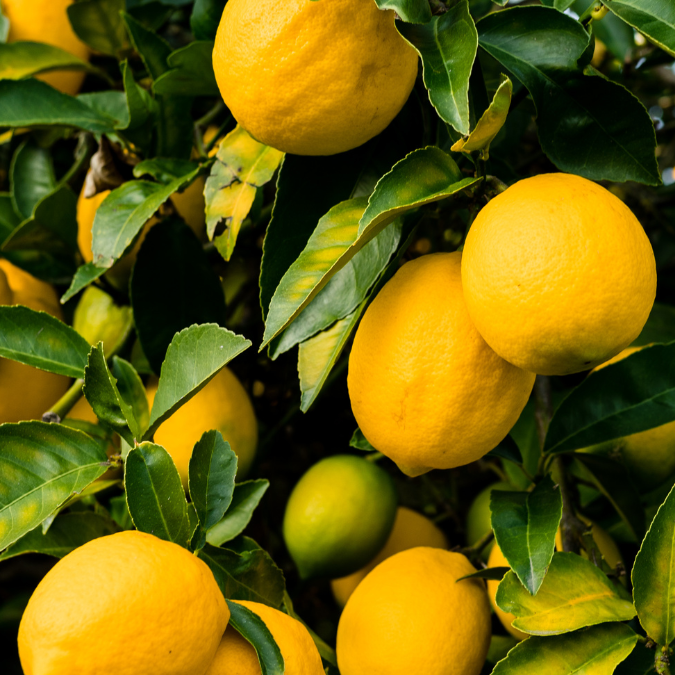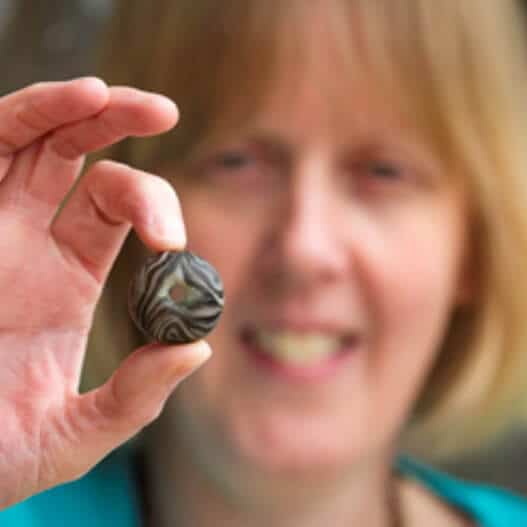Lemons, like most citrus fruits, grow from a particular type of small evergreen tree scientifically known as Citrus limon which is in the Rutaceae flowering plant family. Lemon trees thrive best in tropical climates that offer heat and humidity and can tolerate poor types of soil. Lemon trees can grow up to 10 metres high, and their branches normally have thorns and shiny green leaves extending from them.
When the lemon tree blooms, it produces small, white, five-petalled flowers. During late summer to early autumn, these flowers produce the botanical which can be harvested straight from the tree.

Lemons are believed to have originated in South-East Asia and have been connected to China, Myanmar, and the Assam state of India. However, it is unknown which of these areas was the original habitat of the lemon tree. The common name ‘lemon’ was first used to refer to the botanical during the Middle Ages and is believed to be derived from the Arabic word ‘laymun’ and the Persian word ‘limun’. Archaeological evidence attests that lemon trees were introduced to Persia, Iraq, and Egypt circa 700 AD.
Lemon trees were introduced into Southern Italy circa 200 AD. Lemons were not widely cultivated, nor it seems did the Ancient Romans use lemons in cooking. However, the botanical was considered a valuable luxury, and most elite Roman households would decorate their homes and gardens with lemon trees to display their wealth to their visitors. Like the Ancient Romans lemon trees were also used as an ornamental plant in early Islamic gardens. Between 1000–1150 AD Arab traders distributed lemon trees around the Mediterranean region. The first substantial cultivation of lemons in Europe began in Genoa in the middle of the 15th century.
The lemon was later introduced to the Americas in 1493 when Italian explorer and navigator Christopher Columbus (October 1451 – 20th May 1506) carried lemon seeds to Hispaniola.
Lemon Juice for Sailors with Scurvy
Lemons are high in Vitamin B, Vitamin C, calcium, iron, potassium, and zinc. In traditional medicine lemons were used to treat a variety of ailments. In Ancient Egypt, Greece and Rome, lemon juice, lemon peel and lemon rind were used to treat colds and fevers, help protect against poison, help people survive snake bites, and ease pregnancy and facilitate childbirth.

Lemon juice was also used to treat various gastro-intestinal related ailments including diarrhoea, dysentery, and slow digestion, and help treat wounds and keep cuts from getting infected. In 1747, James Lind (4th October 1716 – 13th July 1794) a Scottish physician, discovered that lemons which were high in Vitamin C could be used to keep sailors from getting scurvy on long voyages where they had limited access to fresh fruit. As a result, the Royal Navy adopted a policy of adding lemon juice to sailors’ diets during long-voyages to keep them healthy.
Ancient Egypt to Parisian Delight to Scottish Gin
Lemon juice, lemon peel and lemon rind have been used in cuisines around the world for thousands of years to make both sweet and savoury dishes. The first records of lemon-sweetened drinks date back to Ancient Egypt. These drinks continued to be popular in the Near East and Crusaders returning from the Holy Land introduced both the botanical and recipes for lemon-sweetened drinks to Europe. In the 17th century, lemonade officially debuted in Paris and became so well-loved that there was a French union formed around the sale of lemonade.
Lemon is the most common citrus fruit used in gin production today. In fact, lemons have been used as a gin botanical for centuries and today you will find lemon in most classic gins, especially lemon peel. Distillers use lemon peel to impart a distinctive, citrus aroma to the spirit.
Many of our gins use lemon but our most distinctive is our Lemon Sherbet Guest Pouch – which has bright and zesty lemon aromas with a hint of sweetness, reminiscent of a classic lemon sherbet sweet! Our Guest Pouches are available exclusively to our Refill Rewards Club members – find out more.




